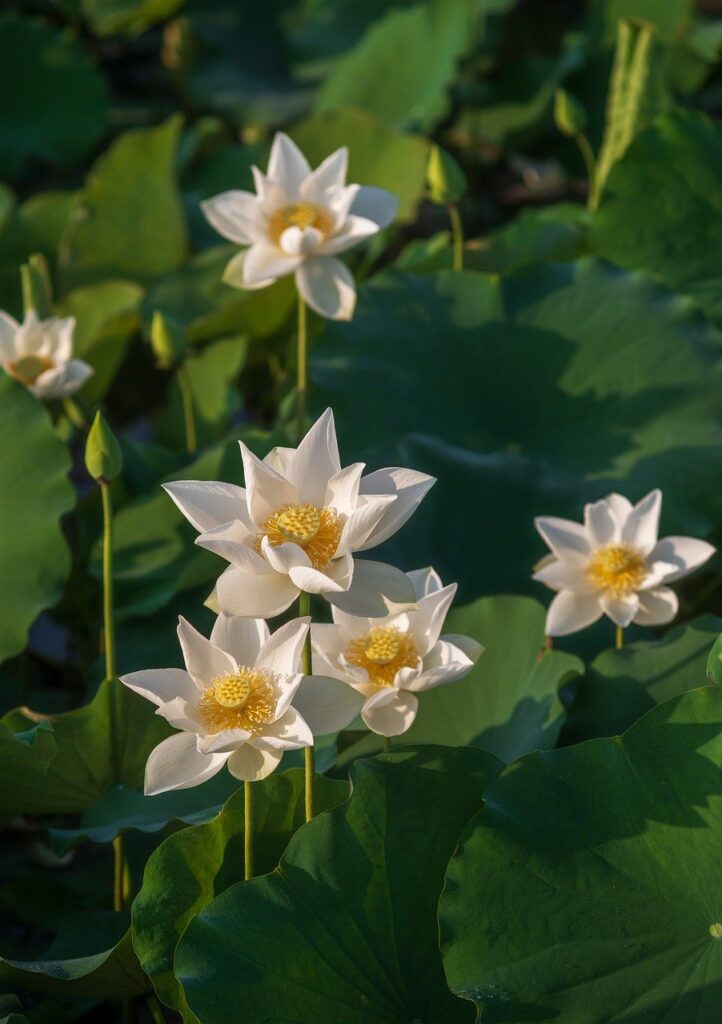Growing a lotus plant from seeds at home can be an incredibly rewarding experience. With its beautiful, fragrant flowers and serene leaves, a lotus adds an elegant touch to any garden, pond, or water feature. Here’s a step-by-step guide on how to grow a lotus plant from seeds, along with some essential tips for success.
What You’ll Need:
- Lotus seeds (available online or at gardening stores)
- A container or pot (with drainage holes)
- Soil (a mix of loamy or clay-based soil)
- Water (preferably distilled or tap water)
- A warm, sunny spot (indoor or outdoor)
- A sharp knife or file (for scarification)
Step-by-Step Guide to Growing Lotus from Seeds:

1. Scarify the Lotus Seeds
Lotus seeds have a hard outer shell, and in order for them to germinate, you’ll need to break it open. This process is called “scarification.”
- Method: Use a sharp knife or file to gently file or nick the outer shell of the seed. Be careful not to damage the inner seed. The goal is to allow water to penetrate the seed for germination.
- Tip: You can also soak the seeds in warm water for 24-48 hours before scarifying to soften the shell.
2. Soak the Seeds
After scarification, soak the seeds in a container of warm water for about 3 to 5 days. Change the water daily to keep it clean.
- Tip: You’ll notice small cracks forming on the seed, which is a sign that germination is beginning. Be patient — some seeds may take longer to crack open than others.
3. Prepare the Planting Pot
Choose a shallow container, such as a wide bowl, pond, or a large planter, with at least 6-12 inches of depth. Lotus plants need room to grow their roots and leaves.
- Soil: Use heavy, clay-based soil to anchor the roots and provide the necessary nutrients. Avoid using potting mix as it can float away when placed in water.
- Planting: Fill the container with soil and gently press the seed into the soil, leaving it partially exposed to the water. The seed should be buried about 1-2 inches below the soil surface.

4. Add Water
Once the seeds are planted, fill the container with water. The water level should be about 3-4 inches above the soil surface initially. Gradually raise the water level as the lotus plant grows.
- Tip: If you’re growing your lotus in a pond, ensure that the water is calm, and that the water depth is at least 12 inches to accommodate its growth.
5. Provide Warmth and Sunlight
Place your container in a sunny location where it will receive at least 6-8 hours of direct sunlight each day. Lotus plants need warmth and sunlight to grow.
- Tip: Lotus seeds prefer temperatures between 70°F-85°F (21°C-29°C). If you’re growing indoors, consider using a heating mat to provide additional warmth, especially during cooler months.
6. Watch for Germination
After about 1-2 weeks, the seed should begin to sprout. You’ll first notice small green shoots emerging from the soil and water. As it grows, the seedling will begin to develop larger leaves and stems.
- Tip: Once the leaves reach the water’s surface, they will begin to float. Be careful not to disturb the plant as it establishes itself.
7. Maintain Care as the Lotus Grows
As your lotus continues to grow, it’s essential to maintain proper care:
- Water Level: Keep the water level consistent, ensuring it covers the plant’s roots but does not drown the plant.
- Fertilization: After 4-6 weeks, you can add a water-soluble fertilizer designed for aquatic plants to encourage healthy growth and blooms.
- Pruning: Regularly remove any dead or yellowing leaves to maintain plant health and allow new growth.
8. Wait for the First Bloom
With time, your lotus plant will begin to produce stunning flowers. Depending on the variety, it may take several months to a year for the lotus to bloom fully.
- Tip: Be patient—lotus plants are slow-growing, but once established, they can bloom throughout the summer.

General Tips for Growing Lotus Plants from Seeds:
- Space: Provide enough space for the lotus to spread its roots. A wide, shallow container or pond works best.
- Water Quality: Use clean water, preferably distilled or tap water, and avoid using chlorinated water, which can harm the plant.
- Temperature: Lotus plants are sensitive to cold, so if you live in a cooler climate, bring the pot indoors during the winter months.
- Fertilizer: Be mindful not to over-fertilize, as lotus plants are sensitive to excessive nutrients. A balanced aquatic fertilizer is ideal.

Conclusion
Growing a lotus plant from seeds is a gratifying process that requires patience, but the stunning flowers and lush foliage make the effort worthwhile. Whether you grow your lotus in a pond or a large container on your balcony, these tips will help you nurture your plant into a beautiful addition to your garden. Enjoy watching the seed you’ve carefully nurtured bloom into a breathtaking lotus!

